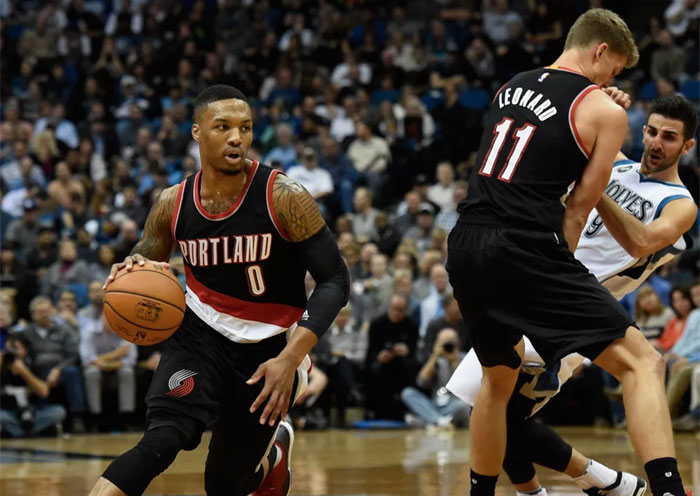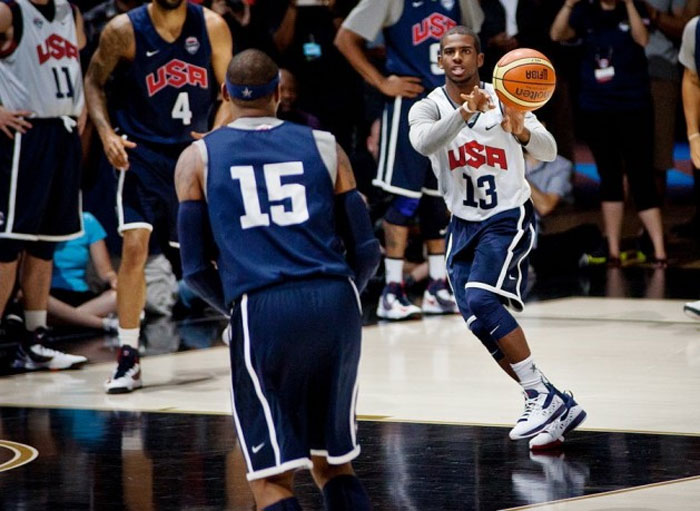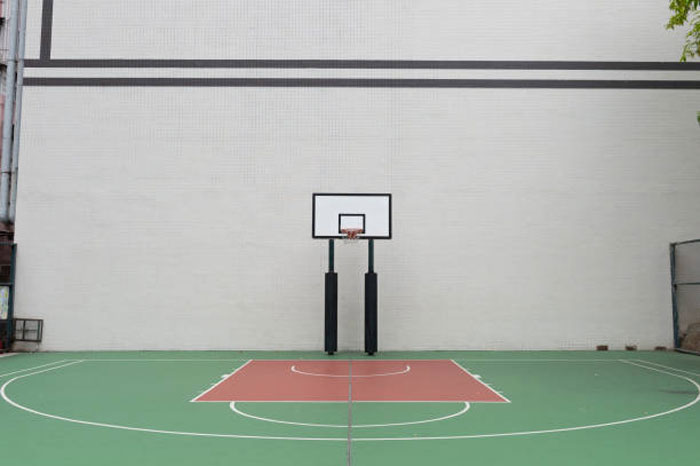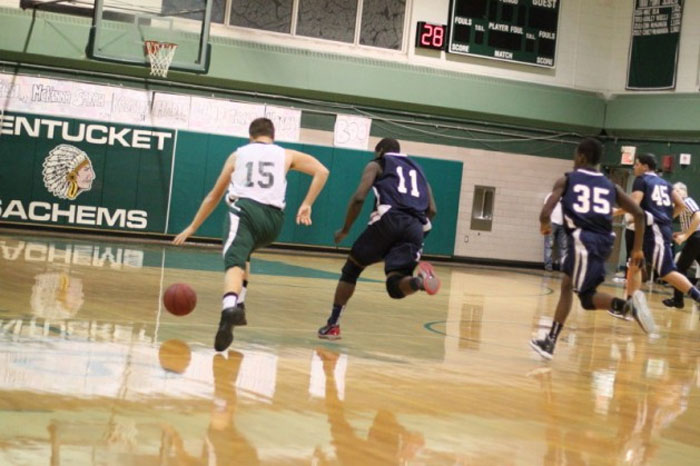Offense in basketball refers to the active strategy by which a team stays in possession of the ball and gets past the defense. The aim is to proceed to the other end of a court (defense) and score more points against the opponent in a match. Now, there are many types of basketball offense.
Unlike soccer, where the pitch is big enough and players have almost enough time to think, basketball players do not enjoy that luxury; they have to make decisive and quick moves.
Offenses require a great deal of teamwork. Depending on the situation, the team on the offense will always have to distract, isolate or space out players in the defense team.
Types of Basketball Offense
Motion Offense
Motion Offense mostly follows no strict pattern as players will have to tweak the strategy according to the opponent's response to the gameplay. This tactic involves rapid and continuous movement of players on the offensive side to throw their defense counterparts off guard.
The point is to catch the defense unaware and seize the opportunity to score points. To execute a patterned or planned motion offense, players must pull off cutting-edge precision.

The "Motion Offense" is purportedly a creation of Henry Iba when he was the coach at Oklahoma State University. However, Bob Knight, a one-time coach of Indiana University's basketball team, played a vital role in developing this offensive strategy. Screening became an integral part of the offense at the instance of Bob Knight.
Motion Offense utilizes offensive moves such as ball reversals, cutting, dribbling quick passes, screening, spacing, and shots. Players move the ball so fast that the opponent cannot keep up. When the right team uses this strategy, they can take on the most prominent teams.
The four significant types of Motion Offense include 5-Out, 4-Out-1, 3-Out-2, and 2-Out-3. The 5-Out Motion Offense variant requires all five players playing on the perimeter, leaving no post player(s).
Pick and Roll Offense
This is one of the most efficient strategies in offensive play. Just as the name suggests, it involves a player setting a screen (pick) for a teammate who is the ball-handler at the time. After the screen, the one with the ball then makes a move for the basket (roll).
A screen is set when a player on the offensive side gets in the way of a player in defense to free a teammate. On the other hand, a roll is the freed teammate making a cut to finish the play. If the roller cannot make the basket, the screener must be in a position to receive a pass for a clean shot.

This tactic is efficient because players do not need much experience or intelligence to execute it. Players who can communicate effectively to make a play within a split second will effortlessly perform a Pick and Roll Offense. You only need good ball handlers and players who can set good screens here.
Some of the best Pick and Roll duos are LeBron James & Anthony Davies and Stephen Curry & Draymond Green. Others are James Harden & Clint Capella, Donovan Mitchell & Rudy Gobert, etc.
You might also like: What is an Illegal Screen?
Zone Offense
This is a strategy that a team adopts to break a zone defense. Zone Defense refers to an arrangement where players must guard an area within the court. This offense demands that the players on the defensive side move together while holding their zones (where the coach assigns them to guard).
Players on the offense will only get results through much perimeter play, drive and shoot strategy. Breaking a Zone Defense is as simple as overloading and attacking from the defense's most weak point with the best ball-handler in the center. In other words, the offensive side drives in between the zone defense, creates a space, then shoots.

Zone Offense utilizes passes and shot fakes, spacing, move-on passes, behind attacks, and the Pick and Roll tactic. The whole idea is to throw the defense team off balance and make a basket.
Today, Zone Defense has become a popular tactic that many teams employ, hence the need for Zone Offense.
Dribble Drive Offense
This type of motion offense was primarily developed and influenced by an American basketball coach, Vance Walberg. The Dribble Drive Offense became famous when he was manager of the men's basketball team at Clovis High School, California.
The idea is simple: the one with the ball drives the ball into the center of the defense quickly. He passes the ball to the nearest free man in the perimeter who then goes for a shot. Just in case, the driver moves out to a free spot beyond the 3-point line to get a clean shot. When he cannot spot any of his teammates, the ball handler goes for a layup.

However, it is not as simple as it sounds. Not every team can utilize this strategy as it requires a team of highly trained 3-point shooters, sharp perimeter players, and fast runners.
Overall, it requires players to grab the ball whenever it is passed, especially on the move. This offense calls for a highly organized movement of players and making quick moves to confuse the opponent.
Actions such as crossovers, spins, behind-the-back, and between the leg dribbles, etc., are taken at this point. Due to its more aggressive approach, players (both offense and defense) tend to get tired on time.
You will be correct to attribute the success of players such as Steph Curry, Kyrie Irvin, and James Harden to this tactic; drive, create chances, and shoot.
Transition Offense
Transition Offense, otherwise known as the Fast-break Offense, is an aggressive strategy that requires immediate pressure on the opponent when they lose the ball.
Setting the ball in motion immediately after a rebound or steal will most likely spell doom for the defense. Fast-break Offense is an intelligent way for the offense to penetrate the defense before they get in position and earn easy and quick baskets.
After a defensive rebound, players formerly in defense resume offensive positions and pace towards the other end of the court. The rebounder then makes an outlet pass to a guard, who drives the ball forward, dribbles, passes, or shoots. A guard must have an outstanding balance and ball-handling capability.

Teams that use this strategy must be highly trained ball handlers and athletic players because if they must get results, they must be ready for rapid moves.
Transition Offense also calls for an outstanding bench of players just as good as the starting five or even better. This requirement is because fast-tempo gameplay will wear-down players eventually, majorly at the end of the third quarter.
A good time to employ this tactic is when playing against teams who are not fast or do not play fast-tempo matches. Sharp guards and post players with experience will get the job done.
Transition Offense is an invention of Frank Keany, a former University of Rhode Island basketball coach.
You might also like: What is a Turnover in Basketball?
Triangle Offense
This offense strategy is attributed to a coach from way back - Tex Winters. And it became popular when Phil Jackson pulled off the unusual, using this strategy with his Chicago Bulls and Los Angeles Lakers teams. Since then, this strategy has become one of the most popular offensive tactics in basketball.
Triangle Offense is a relatively structured, fast triangular movement among the five players per time. "Relatively" in the sense that it is also a flexible mode of operation. The players in offense may change the triangle depending on how the defense responds to the gameplay.
Here, players move as freely as possible while maintaining the necessary spacing until they find a scoring opportunity.
Not every team has what it takes to utilize this tactic, and it is best for teams with sharp scorers because of the many reads and reactions that come with the process.
Also, players must be effective in the dribble hand-off, pass, guard inside and outside cuts, and off-guard cut-through moves. In a nutshell, players must have some experience to pull this off.
Conclusion: Types of Basketball Offense
Coaches and players alike keep creating new types of basketball offense and developing the already existent ones.
For offenses to be on point, players will have to continuously develop their skills, such as blocking, dribbling, passing, screening, shooting, stealing, and more. However, winning a match hinges on how well a team communicates among themselves.
The strength and dynamic nature of a team, and the defense tactic of the opponent, determine the type of offense strategy that they will adopt. However, more than having strategies, players must give room for precision to get results.
